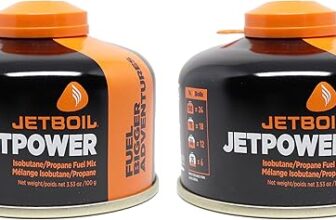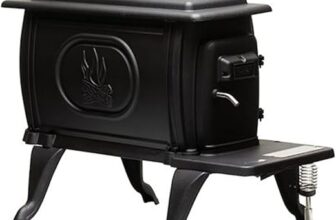
The guide on “How to store the Klymit Static V2 properly” outlines essential steps for maintaining the durability and performance of this lightweight sleeping pad. It emphasizes the importance of cleaning the pad before storage, ensuring it is completely dry to prevent mold and mildew. The guide recommends rolling the pad loosely rather than folding it to avoid creases and damage, and storing it in a cool, dry place away from direct sunlight and extreme temperatures. Lastly, it advises using a storage sack or container to protect the pad from physical damage and maintain its shape, ensuring that it remains in optimal condition for future outdoor adventures.



Tips for Storing Your Klymaloft Sleeping Pad
Clean the Sleeping Pad
Clean the sleeping pad before storing your Klymit Static V2. Wipe down the surface with a damp cloth, ensuring to remove any dirt, debris, or stains that may have accumulated during use. Pay special attention to the seams and crevices where grime can easily hide. After wiping, allow the pad to air dry completely in a well-ventilated area, as trapped moisture can lead to mold and mildew growth over time. Avoid placing it in direct sunlight for extended periods, as this may damage the material. Ensure that the pad is fully dry before folding and storing it to maintain its integrity for your next adventure.
Deflate the Sleeping Pad
Open the valve of the sleeping pad completely to allow air to escape. Position yourself at the opposite end of the pad from the valve. Begin rolling the pad tightly, applying gentle pressure as you proceed to push the remaining air out through the open valve. Continue rolling until you reach the valve end, ensuring that you consistently exert pressure to facilitate maximum air removal.
Once you have rolled the pad up, make sure to press down on it lightly while closing the valve to prevent any air from getting back in. This helps minimize the size of the pad for storage and avoid any creases that could compromise its insulation and comfort during your next use. Store the sleeping pad in a dry place away from sharp objects to further protect it during storage.
Fold the Sleeping Pad
Deflate the sleeping pad thoroughly to ensure it is compact.
- Fold the pad in half lengthwise, bringing the two long edges together.
- Press down gently to remove any remaining air and flatten the pad.
- Fold the pad again in half, aligning the newly created shorter edges.
- Secure the folds by rolling the pad tightly from the bottom up if necessary, creating a compact cylinder or rectangle.
This method effectively reduces bulk and makes it simpler to pack into your backpack or storage.
Use a Storage Bag
Place the folded sleeping pad in a breathable storage bag or a mesh sack. This allows for air circulation, which is crucial for preventing moisture build-up inside the bag. Opt for storage solutions made from materials like cotton or nylon that offer breathability. Avoid using airtight bags as they can trap moisture, leading to mold growth or degradation of the sleeping pad’s materials over time.
- Choose a storage bag that is large enough to accommodate the sleeping pad without forcing it inside.
- Ensure the bag is kept in a dry, cool location away from direct sunlight.
- Examples of suitable bags include:
- A cotton drawstring bag, which promotes airflow while providing coverage.
- A mesh sack, which allows maximum ventilation for the sleeping pad.
By following these steps, you significantly extend the lifespan of your sleeping pad, ensuring it’s ready for use every time you need it.
Store in a Cool, Dry Place
Select a storage location that is cool and dry, ensuring it is well-ventilated and free from direct sunlight. Scout your home for a spot like a closet or a storage room that maintains a stable temperature year-round. Avoid basements and attics, as these areas are prone to extreme temperature fluctuations and humidity levels, which can ultimately damage the material of the sleeping pad.
Place the sleeping pad flat if possible, or rolled up loosely to preserve its shape. Ensure that the chosen spot remains away from heaters, air conditioning units, or any appliances that generate heat. Avoid using plastic bags for storage, as they can trap moisture and promote mold growth. Check the storage area regularly for any signs of dampness or pest activity, adjusting your storage method or location if needed.
Avoid Heavy Weights
Avoid placing heavy items on top of your stored sleeping pad. This practice can lead to permanent creases or damage the material over time, compromising the comfort and insulating properties of your sleeping pad when it’s time for use. For instance, if you stack a heavy backpack, camping gear, or any bulky equipment on top of your sleeping pad while storing it, the weight can create deep indentations. Over time, these indentations may not fully spring back, leaving your pad less supportive.
Store the sleeping pad flat, if possible. If you need to stack items, ensure that the other items are lightweight and evenly distributed to avoid concentrated pressure. Consider using a dedicated storage bag or section in your gear closet where the pad can lay flat without any objects on top of it. Be mindful when storing camping supplies next to your sleeping pad; use lighter, softer items such as clothing or sleeping bags that won’t exert pressure on the pad’s surface. This careful attention will prolong the life and performance of your sleeping pad.
Regular Checks
Examine the sleeping pad regularly for any signs of wear or damage. Look for punctures, tears, or leaks, as these can compromise its insulating abilities and overall comfort. Run your hands over the surface to feel for any inconsistencies that may indicate issues beneath the material. Inspect the corners and seams closely, as these areas are often more vulnerable to stress and damage.
Test the pad’s inflation capabilities by fully inflating it and letting it sit for a few hours. Monitor for any loss of air, which could suggest a slow leak. If you find any damage, address it immediately by using appropriate repair kits or contacting the manufacturer for assistance. Always clean the sleeping pad after each use, ensuring it is dry and free of dirt and debris, which can prolong its lifespan and enhance its performance for your next adventure.
Best Storage Practices
In conclusion, ensuring the longevity and performance of your Klymit Static V2 sleeping pad hinges on proper storage techniques. By meticulously cleaning, deflating, folding, and selecting an appropriate storage environment, you can protect your investment and enhance your outdoor experiences. Adhering to these steps will help keep your sleeping pad in top condition, ready for all your future adventures.
Essential Supplies Needed

Optimal Storage Practices
Step-by-Step Guide to Setting Up and Enjoying Your Klymit Static V2
- Unpack and Inflate: Start by removing the Klymit Static V2 from its carrying bag. Open the valve and blow air into the pad using the provided inflation sack, or simply use your breath. The pad is designed to inflate quickly, so only a few breaths may be needed
- Adjust for Comfort: Once inflated, lay the sleeping pad flat on the ground. You can adjust the firmness by releasing a little air through the valve to find the level of comfort that suits you best
- Positioning: Place the sleeping pad inside your tent, bivy sack, or under the open sky for camping. Make sure the pad is laid out flat without any rocks or sharp objects underneath to prevent punctures
- Deflating: When you’re ready to pack up, open the valve and gently roll the sleeping pad from the opposite end of the valve to push air out. Continue rolling until all air is released, then fold and store it in the carrying bag
- Maintenance: Regularly check for damage or air leaks before and after use, and clean the pad with a damp cloth occasionally to maintain its durability
- These steps should help you effectively use the Klymit Static V2 sleeping pad for a more comfortable camping experience!
Common Questions About the Klymit Static V2 Sleep Pad
The Klymit Static V2 sleeping pad is water-resistant, but it is not fully waterproof. It is designed to withstand some moisture and can repel light splashes or spills, but it is not meant to be submerged in water. For best performance and to maintain its condition, it’s advisable to keep it dry as much as possible.









Thanks for the feedback! We’re glad you found the guide helpful. We’ll definitely consider a piece on cleaning and maintenance for sleeping pads. As for storage bags, they can help protect your pad from wear and tear, so they’re worth it! Stay tuned for more tips!
Quick question about step 3. When you say to fold the sleeping pad, do you have a specific folding method to avoid damaging it? I don’t want to end up with creases or anything that can ruin my pad. Cheers!
I just wanted to share my success story! After following these steps, I’ve kept my Klymit Static V2 in amazing shape for over a year now! I even took it on a week-long hike, and it still feels like new! Thanks for the advice!
That’s awesome to hear! We love hearing success stories like yours. Proper care really makes a difference, and it’s great that our guide helped. Happy camping!
Hey! Great guide! I’ve been using the Klymit Static V2 for camping trips and it’s been a game changer. I’d love to see an article on best practices for cleaning and maintaining sleeping pads in general. Are there any specific cleaners or techniques you recommend? Also, what about storage bags? Do they really make a difference? Thanks!